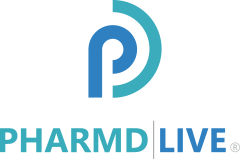Preparing for the Merit-Based Incentive Payment System (MIPS) is steadily moving up the priority list of physicians and healthcare executives as January 1, 2019, draws near.
The financial implications—and upside and downside swings—are imminent.
Changes are coming—and proponents and opponents can agree on one thing: a shift of this magnitude requires deft planning.
To experts preparing for value-based care, two things are clear:
- Choosing the right metrics to report can determine success or failure
- A successful strategy will preclude added administrative or clinical burden
The Centers for Medicare and Medicaid services (CMS) infused flexibility in Quality Payment Program (QPP) measures, providing more than 250 measures and allowing physicians to choose the yardsticks by which they will be measured.
Choosing measures, however, is no small task.
The sheer volume of measures requires thought and careful scrutiny, but investing time is justified due to its magnitude of effect on reimbursement.
Choosing measures your practice has historically performed well in will set your practice up for MIPS success.
And…choosing measures most closely related to the patients you see in practice will ensure you meet the minimum number of reported cases for that measure.
When reviewing possible measures, keep in mind you will be submitting data for 2019 on at least 60% of your Medicare and non-Medicare patients, on a minimum of 6 quality measures.
Evaluate the data that comprises the measure to ensure the process is in place to capture it.
Determine where—and by who—the data will be captured.
Will it be gathered by the nurse or a front-desk attendant?
What must be entered into the EHR for accurate reporting?
The maximum value of each measure is ten points.
Groups comprised of more than 16 physicians will be evaluated on a seventh ten-point measure for all-cause hospital readmissions.
Data does not need to be reported for the seventh measure, as it is aggregated by the CMS through claims data.
Bonus points can be earned for using Certified Electronic Health Record Technology (CEHRT).
Because many measures are based on patient management that happens between visits, a strategic plan may include outsourcing CCM and TCM (Transitional Care Management) to a third party, such as PharmD Live, to boost MIPS metrics without increasing physician workload.
PharmD Live’s turnkey chronic care management services address over 50% of MIPS measures and provide a monthly report to your practice for streamlined billing and reporting.
To learn more about developing your practice’s MIPS strategy, schedule a consultation.
This article is the second in a series dedicated to helping physicians and hospital clinics prepare for changes to MIPS in 2019.








